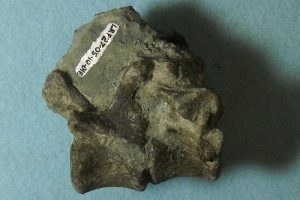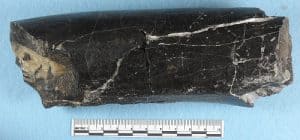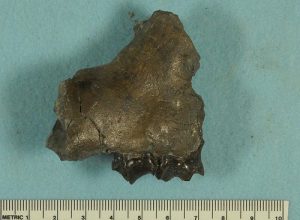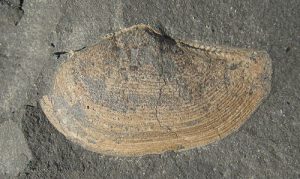 Of all the people working day and night to drill the fourth bore of the Caldecott tunnel, the coolest job has to be “paleontological mitigation”.
Of all the people working day and night to drill the fourth bore of the Caldecott tunnel, the coolest job has to be “paleontological mitigation”.
In the last several million years, Contra Costa County has undergone some changes. Several of the excavated fossils are from the Micone era, which lasted about 23 to 5 million years ago. Can you imagine camels living in Walnut Creek? The vertebrae to the right is from a Micone-era camel.
 This fossilized leg bone is from a rhinoceros of the same era. Ancient rhinoceroses originated in Asia, and formed three distinct lineages – Hyracodontidae, Amynodontidae and Rhinocerotidae. The European Hyracodontidae were fast and resembled modern horses. The Amynodontidae, like the ones living in California, were aquatic and resembled modern hippopotamus. Only the smaller Rhinocerotidae survived into modern times. Of the American rhinos, the short-legged Teloceras, survived the longest, becoming extinct only about 5 million years ago.
This fossilized leg bone is from a rhinoceros of the same era. Ancient rhinoceroses originated in Asia, and formed three distinct lineages – Hyracodontidae, Amynodontidae and Rhinocerotidae. The European Hyracodontidae were fast and resembled modern horses. The Amynodontidae, like the ones living in California, were aquatic and resembled modern hippopotamus. Only the smaller Rhinocerotidae survived into modern times. Of the American rhinos, the short-legged Teloceras, survived the longest, becoming extinct only about 5 million years ago.
 This jaw fragment is from an Oreodont. Though they foraged like modern hogs, their teeth suggest Oreodonts are more closely related to camels. With legs too short to outrun predators, paleontologists believe Oreodonts burrowed like today’s prairie dogs. In addition to the Caldecott Tunnel, Oreodont fossils are found as far north as the South Dakota badlands and as far west as Nebraska.
This jaw fragment is from an Oreodont. Though they foraged like modern hogs, their teeth suggest Oreodonts are more closely related to camels. With legs too short to outrun predators, paleontologists believe Oreodonts burrowed like today’s prairie dogs. In addition to the Caldecott Tunnel, Oreodont fossils are found as far north as the South Dakota badlands and as far west as Nebraska.
 The Caldecott Tunnel bores through three distinct geological formations from three different historical periods. The plants and animals preserved in the Orinda formation represent another time when modern Contra Costa County was dry. The Claremont formation tells another, wetter story, such as the inch-long clam pictured here.
The Caldecott Tunnel bores through three distinct geological formations from three different historical periods. The plants and animals preserved in the Orinda formation represent another time when modern Contra Costa County was dry. The Claremont formation tells another, wetter story, such as the inch-long clam pictured here.
Read the full story on KQED to see more fauna (and flora) pulled from the new Caldecott Tunnel, and learn more about the process.
